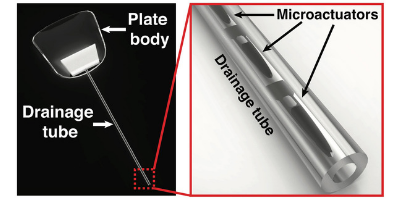Share
US biomedical researchers have developed a self-clearing glaucoma drainage device that uses vibration technology to disperse harmful micro-organisms.

The implanted drainage device consists of built-in micro-actuators that vibrate through the introduction of an external magnetic field. The movement “shakes loose” biomaterials that build up and block the drainage system, ensuring patients maintain optimum intraocular pressure (IOP) levels while eliminating the need for further surgical intervention.
According to the University of Purdue research team, while glaucoma drainage devices have been used to manage IOP for the past 40 years, 15% fail within three years and more than 29% falter within five years. Clinical studies have shown up to 10% of glaucoma patients require additional medication and surgery because of tube blockage, also known as biofouling.
"Typically, implantable devices are made from hydrophobic polymer materials that have high affinity for particular proteins, which adsorb on to the device surface within minutes of implantation. Once it forms, the proteinaceous layer triggers an inflammatory response that can lead to premature device failure.
“We created a new drainage device that combats this problem of build-up by using advances in microtechnology,” Assistant Professor Hyowon Lee from the university’s Weldon School of Biomedical Engineering said.
“It is able to clear itself of harmful bio-buildup. This is a giant leap toward personalised medicine. We can introduce the magnetic field from outside the body at any time to essentially give the device a refresh. Our on-demand technology allows for a more reliable, safe and effective implant for treating glaucoma.”
The device, which features in the latest issue of Microsystems and Nanoengineering, also has the ability to vary flow resistance. This allows the drainage technology to customise treatment for each patient at different stages of glaucoma with varying degrees of IOP.
The research team is working with the Purdue Office of Technology Commercialization to patent the technology, which is currently seeking potential partners interested in licensing the technology.


